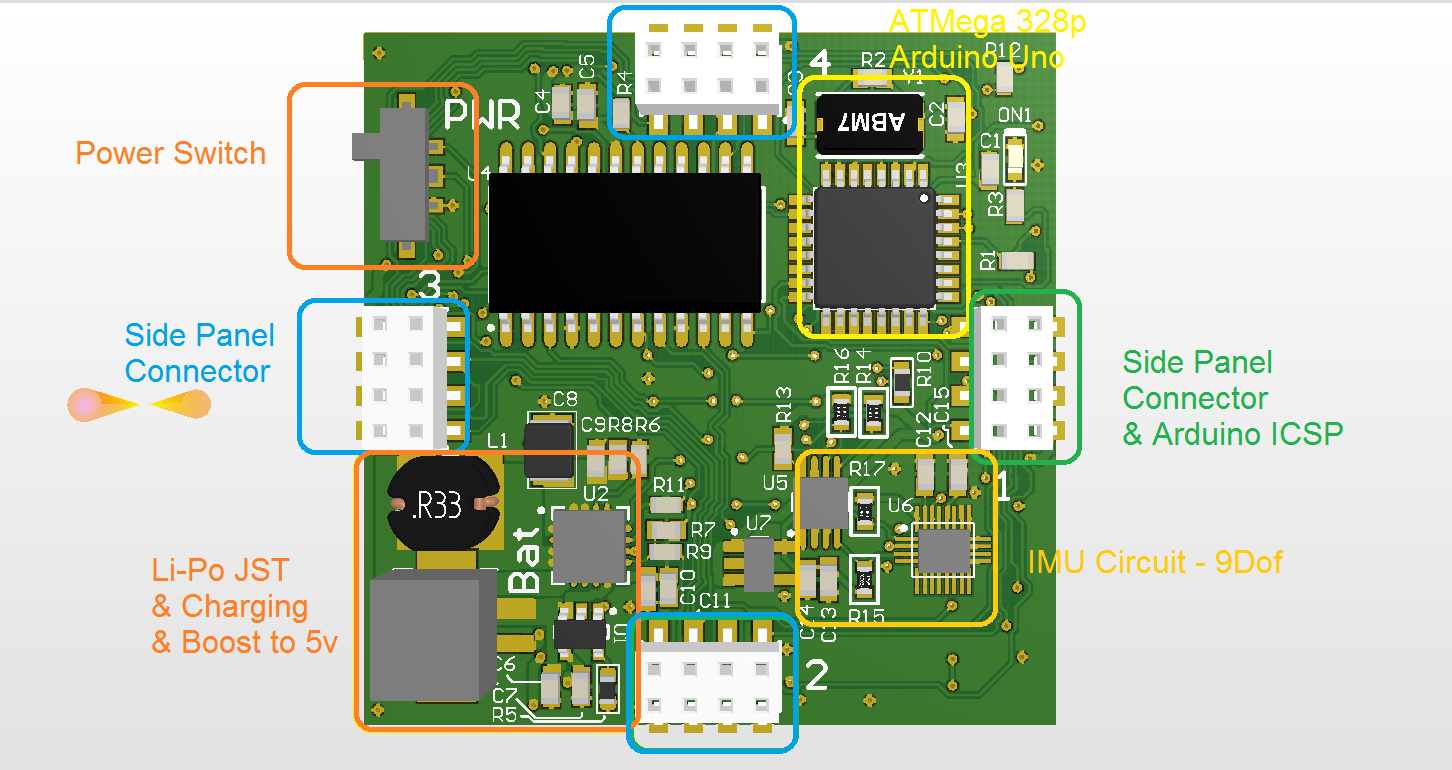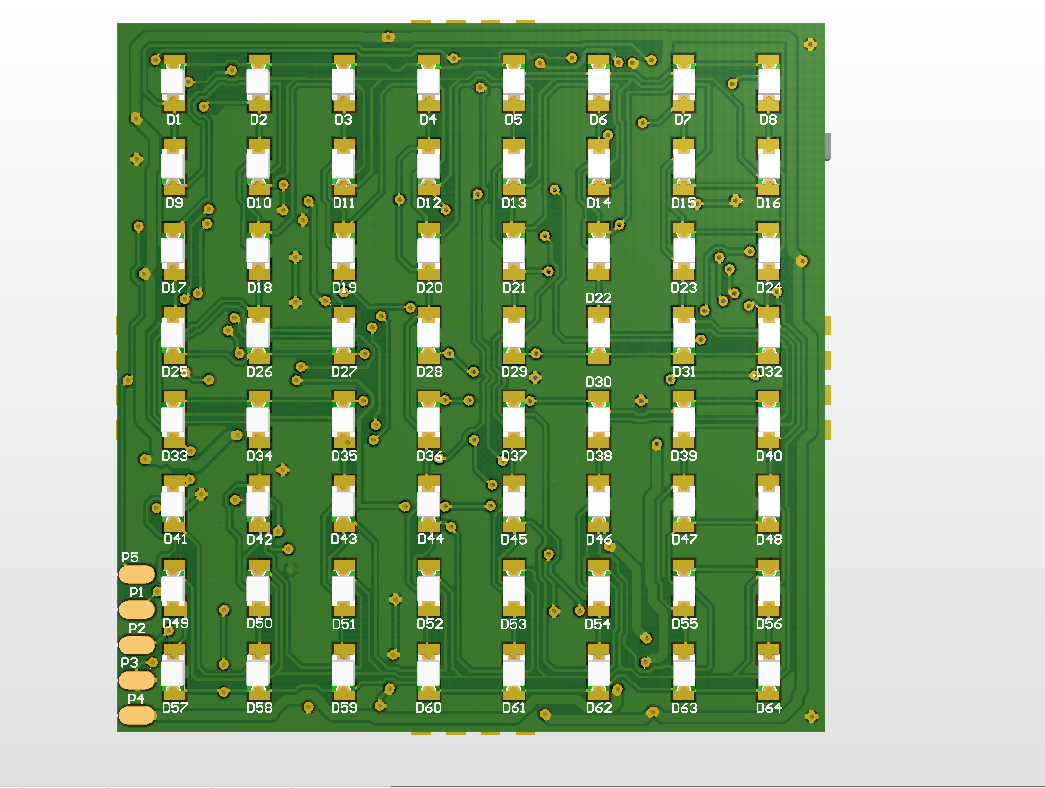
For the initial design of the Bottom PCB I restricted myself to a 2 layer PCB. It's quick and dirty and really it should be a 4 layer so that I can offload power and ground to the internal layers. However, for an initial design and prototype I think it'll work. The Bottom PCB is the "Brains" of the project. It has the following features;
Arduino compatible ATMega328P
4 x Panel Connectors for the side panels - 1 of these can be used with an ICSP programmer to burn the Arduino Bootloader to the ATMega328P.
IMU - LSM9DS1TR - for orientation tracking i2c accelerometer, gyroscopes and magnetometer
LiPo JST Battery connector with charging chip and 5v Boost - based on Adafruit 500 Powerboost
Max 7219 LED Driver for 64 LEDs. Communication via an SPI-similar bus.
And on the back side we have the 64 SMD 0805 LEDs and exposed pads for pogo pins to allow for charging and reprogramming.

 Jack Flynn
Jack Flynn
Discussions
Become a Hackaday.io Member
Create an account to leave a comment. Already have an account? Log In.
Clever; reusing one of the headers for ISP programming.
Are you sure? yes | no
Thanks! Not going to lie, that was one of my favourite little design quirks that feels super useful
Are you sure? yes | no